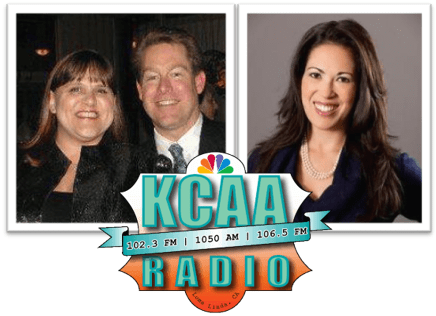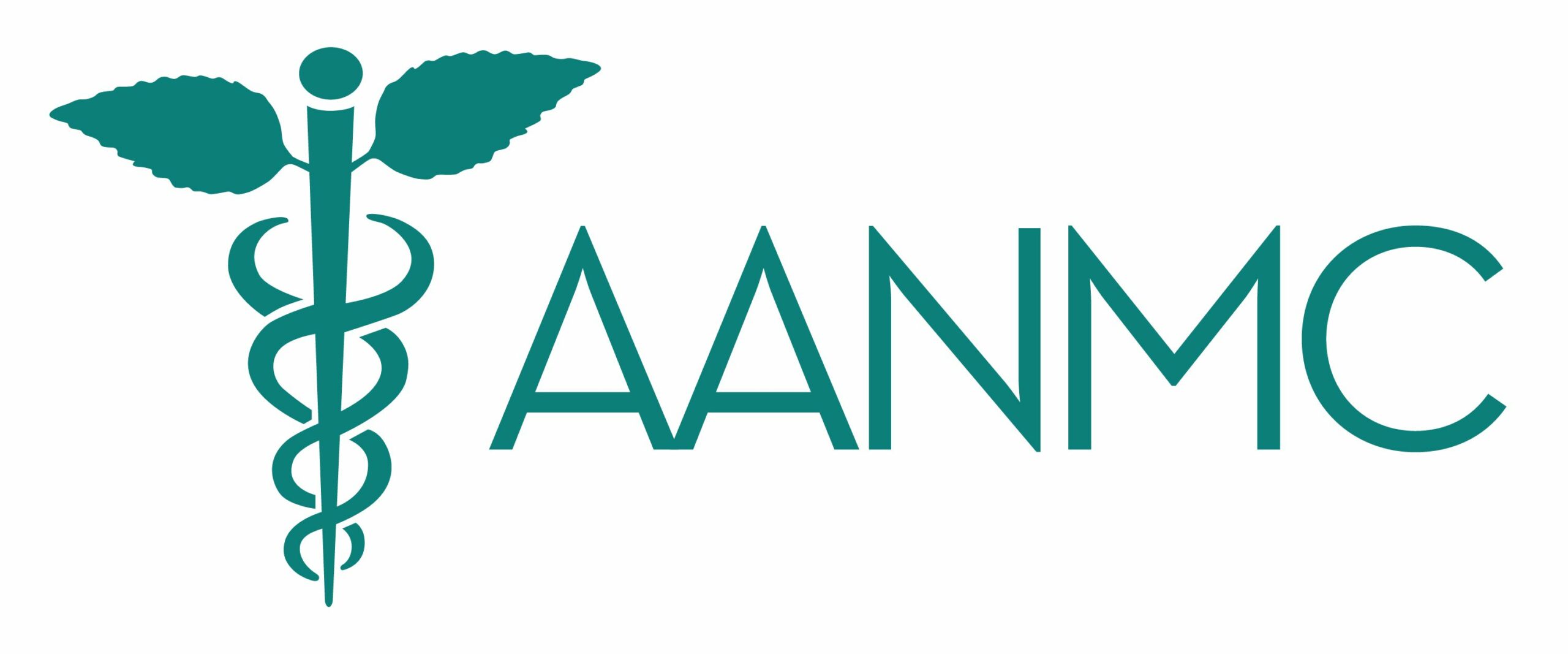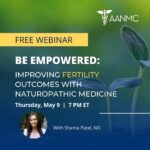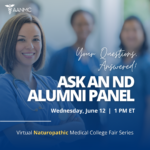 Dr. JoAnn Yanez, AANMC executive director, joins KCAA’s NBC LA affiliate On the Brink to discuss the importance of getting to the root cause of pain whenever possible, before treating with opioids.
Dr. JoAnn Yanez, AANMC executive director, joins KCAA’s NBC LA affiliate On the Brink to discuss the importance of getting to the root cause of pain whenever possible, before treating with opioids.
Full Transcript of Interview Below.
Topics Include:
- Understanding and addressing the root cause of pain
- The financial and intangible costs of pain
- Personal and health expenditures of pain
- Pain as a leading cause of disability
- Pain as a symptom
- Natural approaches to pain
- And more…
Erin Brinker: Welcome back. I’m Erin Brinker.
Todd Brinker: And I’m Todd Brinker.
Erin Brinker: And we are On the Brink, the morning show on KCAA and I’m so excited to welcome back to the show Dr. JoAnn Yanez. She’s the Executive Director of the Association of Accredited Naturopathic Medical Colleges. She joins us once a month to talk about health and wellness and just overall positive living from a naturopathic physician’s perspective. Dr. Yanez, welcome back to the show.
Dr. JoAnn Yanez: Thank you. Good morning.
Erin Brinker: Good morning. So, are you a betting person?
Dr. JoAnn Yanez: I am not.
Erin Brinker: I’m not either. I’m just kidding. I don’t even play the nickel slots or whatever.
Dr. JoAnn Yanez: Yeah, no. “Not I,” said the fly. No, I am not, but I understand that lots of folks are and it can cause people pain. I think that was what we were here to talk about today.
Erin Brinker: Absolutely. Absolutely. Absolutely.
Dr. JoAnn Yanez: How’s that for a segue?
Erin Brinker: There you go. That’s perfect. So how do you … We all hear about this, the opioid crisis, and certainly there have been deaths nationwide from people who’ve become addicted to opioids and then find themselves taking off the shelf stuff, heroin, fentanyl, and it’s been devastating for families.
Todd Brinker: What shelf is that on?
Erin Brinker: Yeah. Well exactly. That’s my point.
Todd Brinker: Street drugs.
Erin Brinker: Street drugs, thank you. I was trying to … I don’t know what I was trying to do. Anyway …
Todd Brinker: I know. I’m teasing.
Erin Brinker: But people who deal with chronic pain, they’re still left, having to deal with that pain. So how are they supposed to function?
Dr. JoAnn Yanez: Well, I think that we have to look at pain from a number of different factors in this country. I believe we’ve talked about this maybe in different tangents before, but pain was classified essentially as the fifth vital sign, and so in addition to heart rate, blood pressure, et cetera, pain was also assessed at patient visits. And what happened, this is a good thing, because pain had been being undertreated, but it turned pain into, okay, well somebody reports something, now we have to do something for it.
I don’t have any problem with the fact that we were uncovering and addressing pain, but the key issue is that we really didn’t look at … in naturopathic medicine, we follow the therapeutic order, and I know I’ve talked about this before. The therapeutic order basically dictates that you start with the lowest hanging fruits first, the easiest interventions, the safest, the gentlest ones first, and then you go up in severity from there. For naturopathic doctors, we’ll focus on addressing the root cause and we’ll try and do it as naturally as possible. So, if you’re going straight to an opiate or straight to something very strong for pain without number one, finding out why the pain is there, and then number two, finding out if there’s a gentler approach, we’re doing patients a disservice.
And so fundamentally, I think that the system in some factions is broken and we really need to be looking at addressing the root cause of why someone is in pain and then helping them to understand the triggers for the pain, what they can do for pain naturally, and then there’s always medication. You can always go there. Nobody likes to see anyone in pain. In fact, yesterday I got the dreaded call from school to come get my son. He was at lunch crying in the corner, apparently teething, and his mouth was hurting him really bad, and so nobody wants to see anyone in pain. It kind of breaks your heart. The whole staff is sitting there like, “We wanted to cry. He looked so sad.”
Erin Brinker: Poor little guy.
Dr. JoAnn Yanez: It doesn’t do anyone’s heart good to see anybody in pain, and so it’s very common in medicine. You want to take that away, “Okay, well I’ve got a way to make your pain go away. Let me do that for you.” Because it’s hard. It’s really hard to watch people in pain. However, we’re not, as you mentioned with the opiate epidemic, deaths by opiates, and the subsequent sequelae that happens with addiction, we’re dealing with a crisis and so we have to look pain in the face and say, “How do we do this better?” because I think as a country we can do better.
And so I’m part of a number of academic initiatives that look at pain, that look at the integrative approaches to pain. There are a number of different ways that medical professionals can work with pain patients, and obviously pain is a big bucket. There are so many different things that will fall in there. There’s acute pain, chronic pain, neurologic pain, things like fibromyalgia, which are a different beast. There are so many different diseases that manifest in pain symptoms: chronic headaches, migraines, GI complaints, back pain. Overall in this country, we spend, and this is a conservative estimate, between $560 billion and $635 billion on pain.
Todd Brinker: Wow.
Dr. JoAnn Yanez: In addition to all the personal and health expenditures, chronic pain really impacts the physical and mental functioning of people, quality of life, work productivity, and relationships, personal relationships. When you’re in pain, most folks are not too pleasant to be around.
Erin Brinker: No.
Dr. JoAnn Yanez: Pain is also the leading cause of disability. So, I think we have to look this in the face. This is the leading cause of disability. What do we need to do differently? When I was in practice, I saw chronic back pain patients, folks with sciatica, things like plantar fasciitis and different types of nerve pain and migraines, and there are so many alternatives that can be offered in addition to medication or in lieu of medication that often aren’t fully explored before medication is offered.
And so that is just kind of my soapbox. It’s, “Okay, medication is there, but before we go there, have we exhausted the other options? Have we looked at everything else? Is that all off the table?” And if it is, sure, absolutely, go to the meds. But let’s check out some of the alternatives that do have data and that do have science behind them. Acupuncture and Traditional Chinese Medicine has significant research behind it for the use in pain, relaxation and mind-body techniques, massage, physical medicine also are strong depending on the presentation.
I remember a number of years back, actually all the newborn pictures I have with my son, my husband was wearing a neck brace, and it turned out it was his glasses. He was having to tilt his head down with glasses that weren’t quite fit appropriately and was getting this chronic neck pain because he was on the computer all day long. And so it wasn’t until we tweaked his working environment, he tweaked his working environment, and got an ergonomic person at work to come in and help him out that the neck pain went away.
Erin Brinker: Interesting.
Dr. JoAnn Yanez: They were already saying, “Hey, maybe you should go to surgery,” and all that kind of stuff. I’m like, “Hold the phone. Wait a second.” So, I think we really can do a better job at uncovering all of those other lifestyle factors, things that we can do from a preventative standpoint, to look at and address pain holistically before going to those harder, more life-altering interventions.
Erin Brinker: And all of those, the … I 100% agree with you. I’m baffled. I’m just shocked at this, the glasses and that figured out that his neck pain was caused by that and you were able to fix it. That’s just … It’s wonderful. But one of the challenges I think that doctors face with their patients is that the patient is in pain right now. Give me something that’ll fix it right now. And the expectation that it’ll be taken care of, and I understand why they expect it. Pain hurts. I mean, that’s what pain is, and perhaps we need to kind of …
Dr. JoAnn Yanez: Pain is a sign. Pain is a signal. Pain is a symptom. When you have your car, I just had the little check tire pressure light went off this week, and you can pay attention to that signal and go take your car in and go get it checked, or you could unplug the light, and I think in some aspects, and I’m not saying that anything is wrong. There are times where pain is 10 out of 10 and you can’t function and you need to unplug that light. But you have to recognize that hey, maybe you’re driving with a nail in your tire.
Erin Brinker: Yeah. That’s a great analogy. Maybe you are driving with a nail in your tire.
Todd Brinker: Or in your back.
Erin Brinker: Or in your back.
Dr. JoAnn Yanez: You can take that pain med. You could do all of that, but hey, let’s get the nail out of the tire.
Erin Brinker: Yeah. So yeah. I …
Todd Brinker: Which seems perfectly obvious, but not, as you said, always the first choice.
Erin Brinker: Exactly. And I’m sorry. I know I’m having … I’m getting over a cold. I’m having a hard time getting questions out of my head, so I apologize. So, the key that is finding a practitioner, finding a physician, a naturopathic physician, or just an MD or DO that will take the time to sit with you and kind of figure out what’s behind the pain that you’re feeling.
Dr. JoAnn Yanez: Is it the glasses? Okay. Sometimes it’s crazy, like let’s get to the root cause. Let’s address what is really the cause of this. I’ve seen patients over the years, avid cyclists with sciatica, folks with just bad body posture, bones that are not quite aligned well, things that stressors, food even that is triggering abdominal pain and all of that. You’ve got to find the root cause, and once you can, there are times where the root cause may be structural and maybe somebody has to live with something chronic. But there are still ways of managing chronic issues that don’t always resort to opiates and very strong medications with strong side effects. That’s the key. They’re there when we need them. Thank goodness they are, but let’s not turn to that first if we can avoid it.
Erin Brinker: Wonderful. So how do people find out more information about you, about the AANMC and about naturopathic medicine in general?
Dr. JoAnn Yanez: Absolutely. We are all on the interweb, aanmc.org. We have Facebook, Twitter, Instagram handles. Come check us out. Next week we’re hosting a webinar with Dr. Casey Seenauth, of the Sonoran University of Health Science’s Neil Riordan Regenerative Medicine Center, and he’s going to be hosting a webinar on integrative approaches to pain management. I hope that if this is something that is interesting for folks, they can come and check it out and learn about the emerging field of regenerative medicine.
Erin Brinker: Well Dr. Yanez, it’s always enlightening to have you on the show. Thank you so much for joining us today.
Dr. JoAnn Yanez: Awesome. Thanks folks. Have a great one.
Erin Brinker: Thank you, you too. So with that, it’s time for a break. I’m Erin Brinker.
Todd Brinker: And I’m Todd Brinker.
Erin Brinker: And we are On the Brink, the morning show on KCAA. We will be right back.








